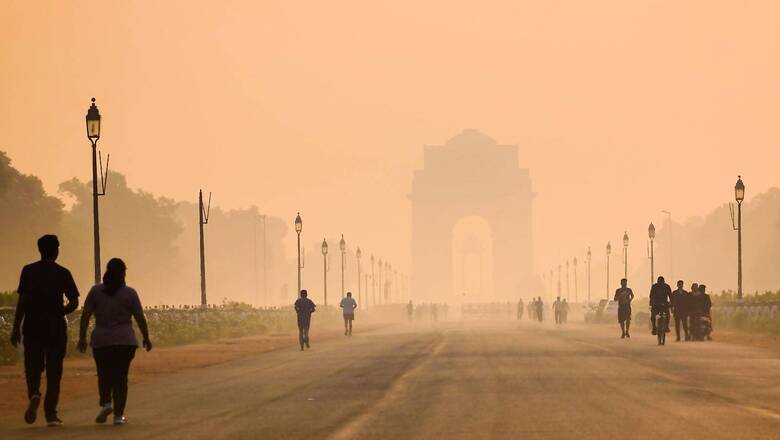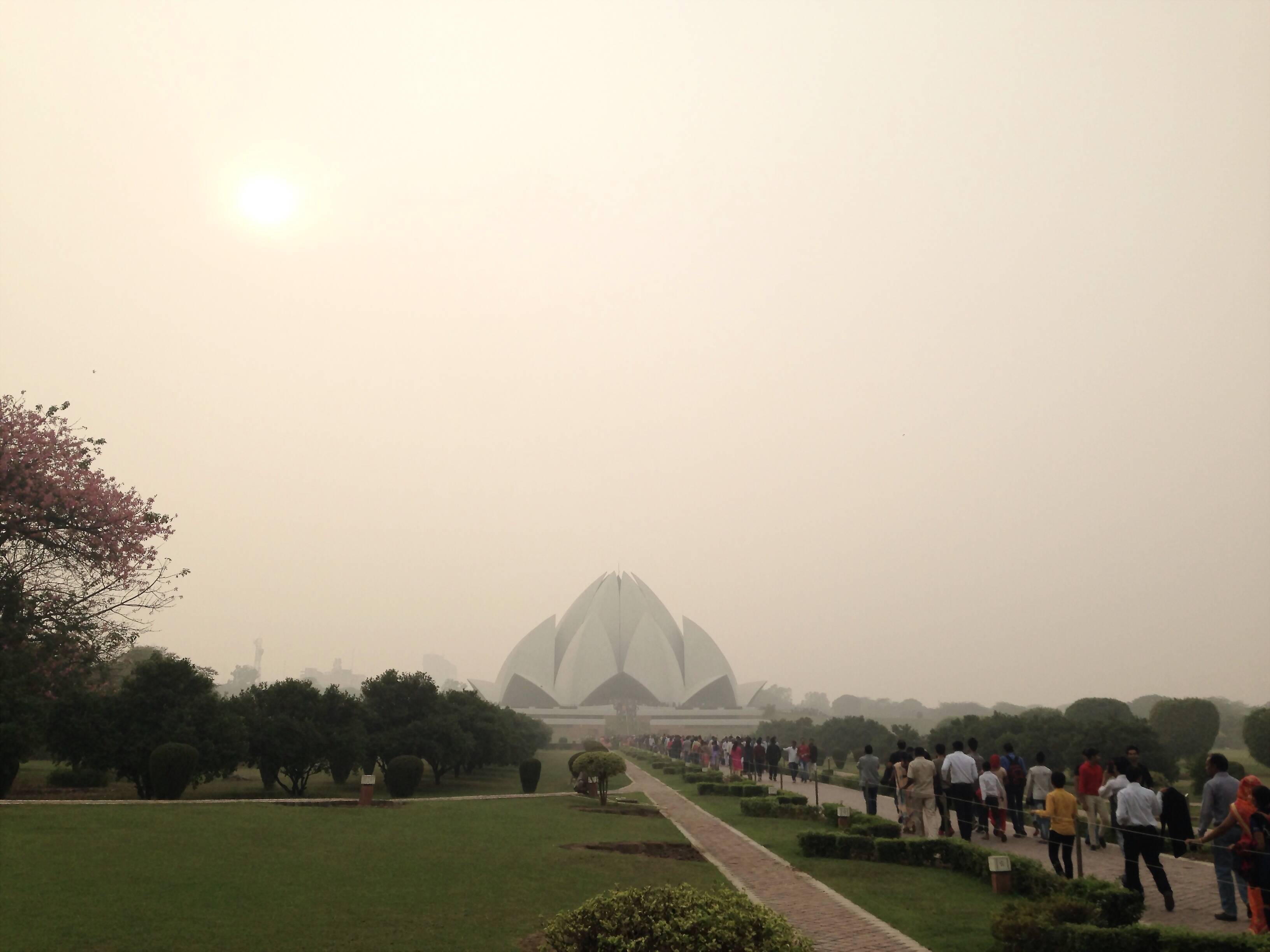
views
If you’re in Delhi, chances are that you are prepping for your annual winter ritual. No, not sunning the blankets and woollens or getting rid of flimsy cottons but arming yourself with a mask, humidifier, and steamer to combat the deadly smog that envelops the capital year after year despite lofty promises to help Delhi breathe better.
With “very poor” air quality predicted in Delhi-NCR by Saturday, the Commission for Air Quality Management (CAQM) on Wednesday directed authorities to enact stage two of GRAP, which includes banning the use of coal and firewood in hotels, restaurants and open eateries.
The use of diesel generators, except for essential services, is also banned under stage two of the Graded Response Action Plan (GRAP) which is a set of anti-air pollution measures followed in the capital and its vicinity according to the severity of the situation.
In an order, the CAQM said: “It was noted that there is a forecast for deterioration of air quality over Delhi and the air quality index (AQI) may move into the ‘very poor’ category from October 22, due to calm winds and the stable atmospheric condition predicted over the capital from Saturday.”
“Also, the Diwali festival on October 24 is expected to worsen the situation further. Therefore, in an effort to prevent the deterioration of the air quality further, the subcommittee decided that all actions as envisaged under Stage II of GRAP — ‘very poor’ air quality (Delhi AQI 3O1-4OO) — be implemented in right earnest by all the agencies concerned, with immediate effect in the NCR in addition to all actions under Stage I,” the order read.
As Delhi gears up to battle pollution, the buzzword seems to be GRAP. So, what exactly is the plan and how does it ensure Delhiites breathe easy? News18 explains:
What is the Graded Response Action Plan?
GRAP is a set of emergency measures that come into force to prevent the deterioration of air quality after it reaches a certain threshold.
It envisions a four-stage ad-hoc mechanism wherein Stage 1 of GRAP is activated when the AQI is in the ‘poor’ category (201 to 300), while the second, third and fourth stages are activated three days ahead of the AQI reaching the ‘very poor’ category (301 to 400), ‘severe’ category (401 to 450) and ‘severe +’ category (above 450) respectively.

The Ministry of Environment, Forest and Climate Change first notified GRAP in January 2017 on the basis of a report submitted by the Central Pollution Control Board (CPCB) in November 2016. After the Environment Pollution (Prevention and Control) Authority (EPCA) was dissolved by the Centre in 2020, the task of enforcing GRAP came to rest on CAQM’s shoulders.
This year, keeping in view the learnings of previous years, Delhi will see a revised GRAP this year. Earlier, the curbs were imposed only after the concentration of PM2.5 and PM10 reached a certain limit. However, the measures will come into effect this year on the basis of forecasts and AQI values to prevent the air from worsening further.
What are the different stages of GRAP?
Stage I
This is when the Air Quality Index (AQI) is recorded between 201 and 300. The air is classified in the ‘poor’ category and the CAQM announces stopping construction and demolition (C&D) activities on a plot size of 500 square metres or more which is not registered on the “web portal of the respective states for remote monitoring of air pollution levels”, news agency PTI reported.
The use of anti-smog guns also begins at construction sites. Construction sites bigger than 5,000 square metres (sqm) will have to mandatorily deploy one anti-smog gun, those over 10,000 sqm have to install two such guns and for sites bigger than 20,000 sqm, four anti-smog guns are compulsory.
This stage also includes ban on open burning of waste while mechanised sweeping and water sprinkling is introduced on roads with heavy traffic. From October 25, the government has also made PUC (pollution under control) certificates mandatory. Owners of diesel vehicles older than 10 years and petrol vehicles older than 15 years will have to produce valid PUC certificates for buying fuel at petrol pumps in Delhi.
Stage II
The air quality is considered ‘very poor’ when the AQI slips between 301 and 400, the stage where Delhi currently stands.
At this juncture, there is a ban on using coal and firewood, including in tandoors at hotels and open eateries. Diesel generator sets will not be allowed except for essential and emergency services such as hospitals, railways, metro services, airports, water pumping stations, and “projects of national importance”, the Indian Express reported.

Bus and metro services will be increased so people can opt for public transport, while parking fee will be raised to discourage people from taking out their vehicles.
Stage III
When AQI is recorded between 401 and 450, the air quality is considered ‘severe’ and this invites a ban on C&D activities, except essential projects, including railways, metros, airports, and national security or defence-related projects of national importance.
Non-polluting activities such as plumbing, carpentry, interior decoration and electrical works will also be exempted from the ban.
Brick kilns, hot mix plants and stone crushers that are not running on clean fuels as well as mining and related activities in NCR will not be permitted.
In industrial areas that do not have piped natural gas (PNG) supply, the units not running on approved fuels will be allowed to operate for five days a week, Indian Express reported.
The state government can ask companies to switch to work from home if possible.
Stage IV
The ‘severe +’ level is reached when the AQI is over 450, putting the Capital into do-or-die mode.
The entry of trucks into Delhi (except for essentials, CNG and electric trucks) will be banned. Except for essential services, plying of Delhi-registered diesel-run medium and heavy goods vehicles in the national capital will also not be permitted.
Industries operating on dirty fuels as well as C&D activities in linear public projects such as highways, roads, and flyovers, will be forbidden. The state governments are likely to impose more curbs like closing educational institutions and plying of vehicles on odd-even basis.
Governments may also allow 50 per cent staff at public, municipal and private offices to work from home. People with chronic diseases, children and the elderly can be asked to avoid outdoor activities.
How has GRAP evolved over the years?
The plan, when first notified in 2017, initially monitored only PM 2.5 and PM 10 levels. However, following a modification in 2020, it now lays emphasis on a more comprehensive AQI, which accounts for other pollutants such as ozone, sulphur dioxide, and oxides of nitrogen.

Till 2020, the Supreme Court-appointed Environment Pollution (Prevention & Control) Authority (EPCA) implemented the plan, but after it was dissolved two years ago, CAQM became responsible to enforce GRAP.
A sub-committee of the GRAP is the key decision-making body and includes senior members of the CAQM, member secretaries of pollution control boards of four states of Uttar Pradesh, Delhi, Haryana, Rajasthan, as well as from the Central Pollution Control Board. The committee also has scientific and health advisers, Outlook reported.
Why does Delhi choke every winter?
Starting with topography, the landlocked Capital becomes a high-pressure area when temperatures dip. This attracts westerly winds from Rajasthan, and sometimes Pakistan and Afghanistan that bring in dust. On the other hand, the Himalayas do not let the air escape, locking in all the dust and pollution.
Delhi also has man-made factors to blame. Rising vehicular traffic, unplanned urban development, waste disposal at whim, use of fossil fuels, stubble burning in the neighbouring states, especially Punjab, and use of firecrackers add to woes of Delhiites.
Read all the Latest Explainers News and Breaking News here















Comments
0 comment